Falaise to Saint-Pierre-sur-Dives
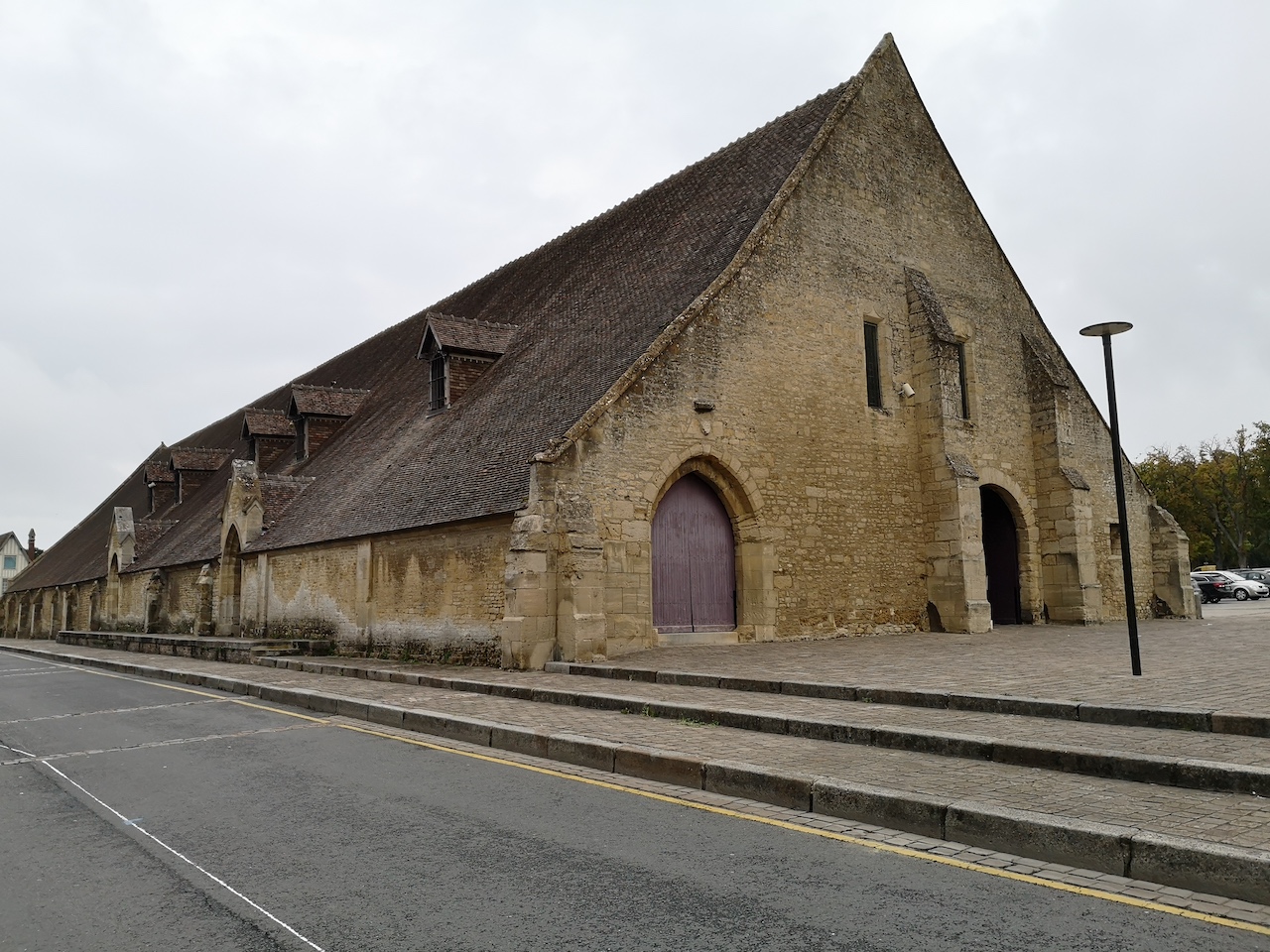
Normandie
11. Falaise to Saint-Pierre-sur-Dives
Medium
5h30
25,1km
+218m
-323m
Step
Embed this item to access it offline
Path without particular difficulty, very often in the plain. It is worth noting, however, the very pleasant passage through the woods crossing the Monts d'Eraines. No restoration possible during this stage.
11 points of interest
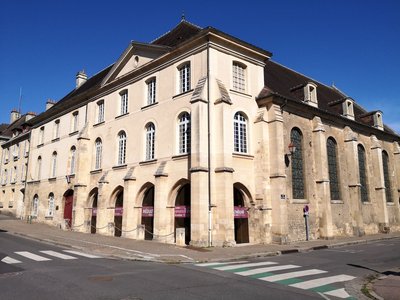
L’Hôtel-Dieu à Falaise - Amis Bretons de Colomban HistoricalL’Hôtel-Dieu in Falaise
The first hospital to be created in the walled city, it complements the Saint-Michel hospital founded outside the ramparts in 1127. Its position did not guarantee patients the safety required during sieges or wars. In the 18th century, the building was rebuilt and the old ward, covered with ribbed vaults supported by columns, was converted into a chapel.
During the 1944 bombardments, the Hôtel Dieu suffered considerable damage, and its restoration allows us to admire the beauty of this hospital.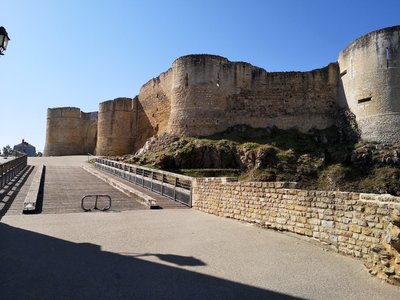
Accès nord du rempart de Falaise - Amis Bretons de Colomban HistoricalThe ramparts of Falaise
The Falaise ramparts are 2 kilometres long. It is not known when they were built, but repairs carried out in 2007 have enabled archaeologists to date the foundations to the 10th century.
The ramparts were in place by the time William the Conqueror was born. The great keep was erected by William the Conqueror's son.
Stroll along the ramparts and discover the Porte des Cordeliers (13th century), named after the friars of the Cordeliers order who settled there around 1225.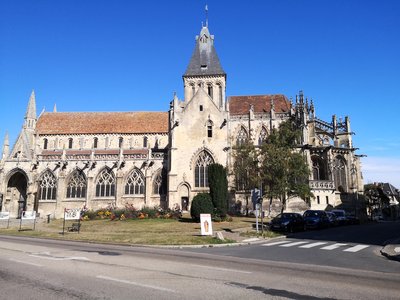
Église Saint-Gervais et Saint-Protais à Falaise - Amis Bretons de Colomban TouristSaint-Gervais and Saint-Protais Church in Falaise
Saint-Gervais church is located in the heart of the town of Falaise. Its construction probably began shortly after the conquest of England in 1066, at the instigation of William the Conqueror, and was completed during the reign of Henry I Beauclerc (1100-1135). The dedication ceremonies to Saint Gervais and Saint Protais took place in April 1124 in the presence of the Duke-King.
The original Romanesque building was inspired by the Trinity Church of the Abbaye-aux-Dames in Caen, on which it depended. Only a few elements remain in the south wall of the nave, the lantern tower and the west façade. Excavations carried out in 1953, showed that the Romanesque choir had the appearance of that of Notre-Dame de Guibray, with an apse and two apsidioles. The most interesting Romanesque remains are the capitals with secular themes, of the first four south pillars of the nave. They evoke the capitals of Ryes, Boscherville and Graville-Sainte-Honorine.
The rest of the building dates from the 13th, 15th and 16th centuries with alterations in the 18th century.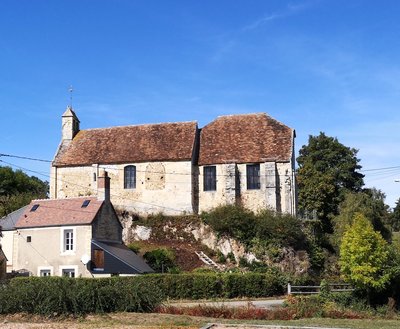
Église Saint-Laurent - Amis Bretons de Colomban TouristSaint-Laurent Church in Falaise
From the first construction dating back to the end of the 11th century, there remains the nave with flat buttresses, with walls made of shale rubble arranged in fishbones. The facade and the portal are also of Romanesque period. Part of the flat chevet choir dates from the end of the 12th century. Queen Mathilde, very attached to the birthplace of her illustrious husband William the Conqueror, made important donations to Saint-Laurent.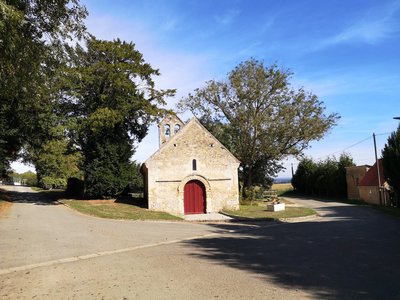
Église Sainte-Anne d’Entremont - Amis saint Colomban TouristSainte-Anne-d’Entremont Church in Bernières-d'Ailly
The foundation of the chapel dates back to the middle of the 11th century on the wish of the Countess Lesceline d'Eu. It was repaired around 1744 and the bays were restored in the 19th century.
The gabled western facade has a portal with a decorated archivolt, surmounted by a narrow bay. The access facade is to the south and the entrance door is framed by two thin arched windows.
The bell tower-wall, in the section between the nave and the choir, shows its two bells.
The building is covered with a gable roof and the cornice of the side walls is decorated with modillions.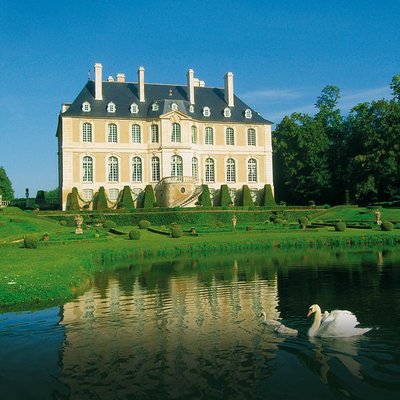
Château de Vendeuvre - http://www.vendeuvre.com HistoricalVendeuvre Castle
Alexandre de Vendeuvre, descendant of one of the oldest families in Normandy, descended from the Counts of Flanders, began in 1741 the construction of a "maison des champs" in keeping with the taste of the day. He called upon the famous architect Jacques-François Blondel to build his summer residence for him.
The sobriety of the general architecture is compensated by the balance and harmony of the mouldings and sculptures. Blondel is attentive to the particularly refined distribution and interior decoration. Listed as a Historic Monument both inside and out, Vendeuvre is the prototype of an 18th century aristocratic Norman country house.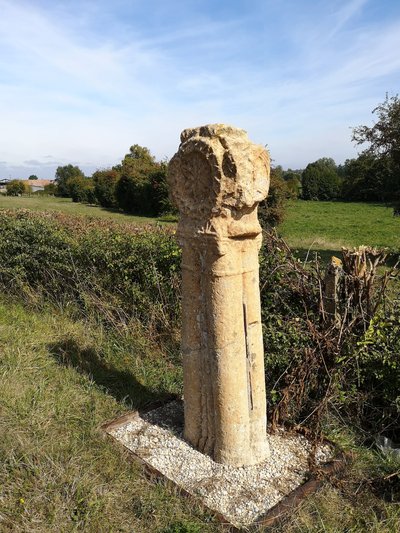
Croix Romane XIIème siècle - Amis saint Colomban CulturalRomanesque Cross XIIth century in Grisy
The cross dates from the 12th century. It has been classified as a historical monument since September 26, 1903.
Carved from a single block of limestone, this cross is one of the only ones still standing in Normandy with those of Feuguerolles-Bully in Calvados, Neaufles-Saint-Martin (Eure)4 and Rouxmesnil-Bouteilles (Seine-Maritime)5. The small number of remaining crosses can be explained by the fragility of their material, their age and the vandalism of the wars of religion.
This 2-metre high monument is composed of a Greek cross placed on four solid columns grouped together in a bundle between which, from the front, two braided cords are inserted. The columns are crowned by capitals decorated with a few volutes. In the centre of the cross, a rosette-shaped fleuron (flower-shaped sculpture) is set within a circle decorated with saw-tooth mouldings. The branches or "wings" of the cross are bevelled and separated by modillions. They are decorated with stars.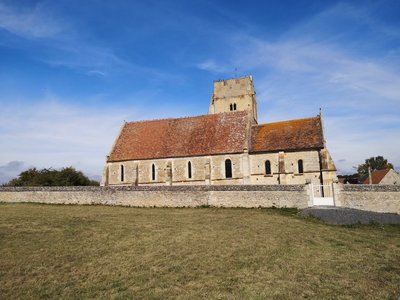
Église Saint-Brice à Vendeuvre - Amis saint Colomban TouristSaint-Brice Church, in Vendeuvre-Grisy
Die Kirche befindet sich auf einem Friedhof im Herzen des Weilers, der im 12. Jahrhundert erbaut wurde. Der heutige Chor stammt aus dem XIII., das Gewölbe des Chores, der Turm und das Nordtor aus dem XV., genauer gesagt aus den Jahren 1464 und 1484 für letzteres.
Das Portal der Westfassade ist das einzige romanische Überbleibsel der Kirche; es gehörte möglicherweise zu einem älteren Gebäude und wäre in die Kirche integriert worden.
Der Turm wurde im 17. Jahrhundert, während der Religionskriege, befestigt.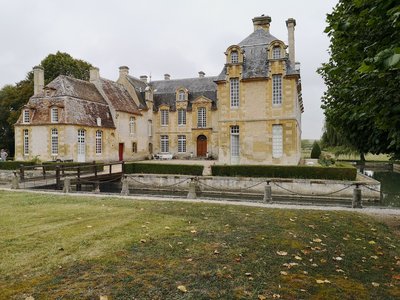
Le château de Carel - Amis saint Colomban TouristCarel Castle
Situated on the banks of the Dives and surrounded by a moat, the Carel castle dating from the end of the 17th and beginning of the 18th century is built on a former residence. The buildings that surround it form an elegant classical ensemble that is reinforced by the pure lines of its dovecote dating from the 16th century.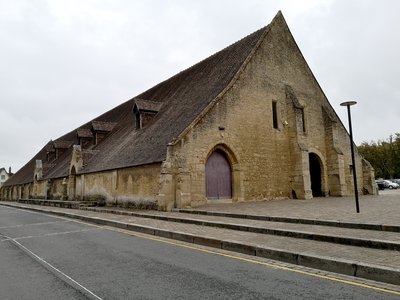
Les Halles médiévales à Saint-Pierre-sur-Dives - Amis saint Colomban HistoricalLes Halles médiévales in Saint-Pierre-sur-Dives
11th century covered market, rebuilt in the 15th century and after 1944. These halls are part of the Norman medieval heritage. Burnt down in 1944, the building was faithfully reconstructed. The oak framework is the product of an assembly of 290,000 chestnut pegs.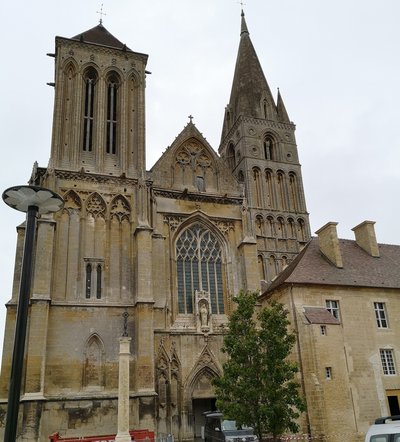
Façade de l’église abbatiale Saint-Pierre-sur-Dives - Amis saint Colomban HistoricalSaint-Pierre Abbey in Saint-Pierre-sur-Dives
The former Benedictine Abbey of Saint-Pierre-sur-Dives, classified as a Historic Monument, is one of the last complete abbeys in Normandy.
Founded in the 11th century by the great-aunt of William the Conqueror, then devastated by a fire, the abbey church was rebuilt in the 12th and 13th centuries and underwent modifications during the 16th and 17th centuries.
In the choir of the abbey church, the 13th century pavement was restored in 2011. An exceptional element of ornamentation, it consists of glazed terracotta tiles inlaid with white motifs on a red background and vice versa, and a rose window 3 metres in diameter.
Lesceline, the founder of the abbey, died in 1057. She was the great-aunt of William the Conqueror, then Duke of Normandy and future King of England. She was buried in the abbey church and her tomb can be found there today.
Description
From the Place de l'Eglise " Guillaume Le Conquérant " take northward the rue Rollon slightly on the right, rue Trinité, second street on the left rue de la Grande Éperonnière, second street on the right rue du Camp Ferme, first on the left pass under the Porte des Cordeliers, on the right rue des Herforts, on the right rue de Caen D658,
- Left after St-Gervais church, rue de Brébisson, straight ahead rue du Sergent Goubin, slightly left rue Victor Hugo, Côte Saint-Laurent, first street on the right, Route d'Etraines, first road on the left, La Vallée
- After the Hameau de la Vallée leave the tarmac road and take a dirt road in front of you in a left turn marked out in yellow and red, Les Bas Jardins straight ahead at the next two crossroads and dirt road, straight ahead at the crossroads in the fields, turn left.
- First dirt road on the right, then right into the woods, right at the crossroads take the asphalt road, before arriving at the airfield dirt road on the left, go along the field and the woods, straight into the forest, yellow and red markings, at the exit of the forest chemin Sainte-Anne-d'Entremont
- Path on the left after Sainte-Anne-d'Entremont chapel, on the right at the crossroads of 4 paths in the fields, turn right in the fields after going along the forest on your right. First field path on the left, on the right at the crossroads with D 242 B, cross the railway carefully
- At Bernières-d'Ailly, first street on the left, rue du village D 271, left at the junction with D 511, cross the railway carefully, right along the railway, right take D 242, cross the railway carefully, rue de la Gare, left, Route de Pont D 271
- Right, rue Le Bas du Pont then left twice in the same street, right at the crossroads D271, rue du Château, direction Vendreuve, stay on the D 271 until Grisy, after the church second street on the right, rue de l'Ecole, left rue du Village turn right at 45 rue du Village rue Moulin de Carel
- Cross the Dives stay on your left, after the church straight ahead on a meadow path passing in front of the park of the castle of Carel, turn right and left on D511, arrival Saint-Pierre de Dives, turn right rue de Falaise, in the city centre turn left rue Saint-Benoit, on the right rue de l'Eglise you have arrived in front of the abbey church Saint-Pierre de Dives.
- Departure : Sainte-Trinité Church, 9 Rue Rollon, 14700 Falaise
- Arrival : Saint-Pierre Abbey Church, Rue de l’église, 14 170 Saint-Pierre-sur- Dives
- Towns crossed : Normandie
Altimetric profile
Report a problem or an error
If you have found an error on this page or if you have noticed any problems during your hike, please report them to us here:
Close by7
- Accommodation
Accommodation
Hôtel et Restaurant -Logis Les Agriculteurs in St-Pierre-sur-Dives
Situated in the centre of the village, this hotel with a relaxed atmosphere is a 12-minute walk from the Saint-Pierre-sur-Dives train station, a 4-minute walk from the Saint-Pierre-sur-Dives abbey and 6 km from the Vendeuvre castle.







